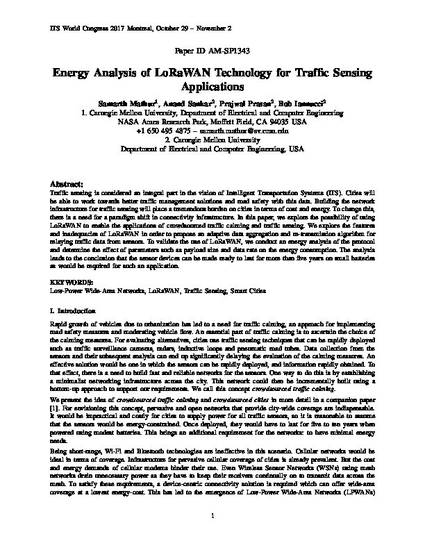
Article
Energy Analysis of LoRaWAN Technology for Traffic Sensing Applications
Intelligent Transportation Systems (ITS) World Congress. Montreal, Quebec, Canada.
(2017)
Abstract
Traffic sensing is considered an integral part in the vision of Intelligent Transportation Systems (ITS). Cities will be able to work towards better traffic management solutions and road safety with this data. Building the network infrastructure for traffic sensing will place a tremendous burden on cities in terms of cost and energy. To change this, there is a need for a paradigm shift in connectivity infrastructure. In this paper, we explore the possibility of using LoRaWAN to enable the applications of crowdsourced traffic calming and traffic sensing. We explore the features and inadequacies of LoRaWAN in order to propose an adaptive data aggregation and re-transmission algorithm for relaying traffic data from sensors. To validate the use of LoRaWAN, we conduct an energy analysis of the protocol and determine the effect of parameters such as payload size and data rate on the energy consumption. The analysis leads to the conclusion that the sensor devices can be made ready to last for more than five years on small batteries as would be required for such an application.
Keywords
- Low-Power Wide-Area Networks,
- LoRaWAN,
- Traffic Sensing,
- Smart Cities I.
Disciplines
Publication Date
November 2, 2017
Citation Information
Samarth Mathur, Anand Sankar, Prajwal Prasan and Robert A Iannucci. "Energy Analysis of LoRaWAN Technology for Traffic Sensing Applications" Intelligent Transportation Systems (ITS) World Congress. Montreal, Quebec, Canada. (2017) Available at: http://works.bepress.com/bob/34/
